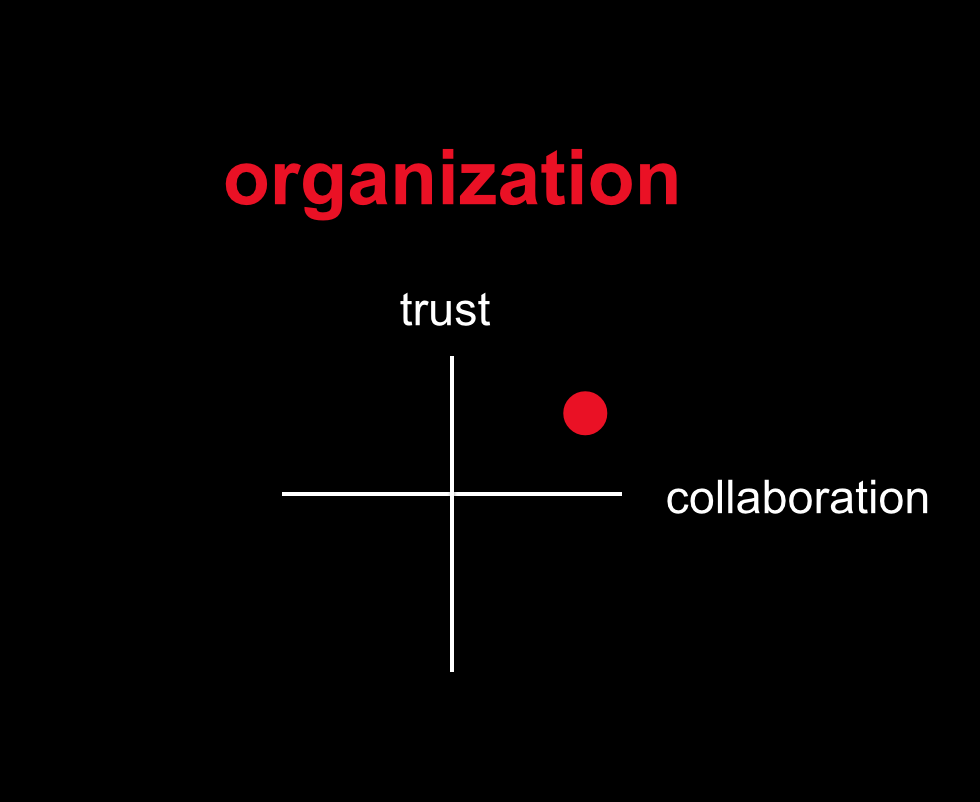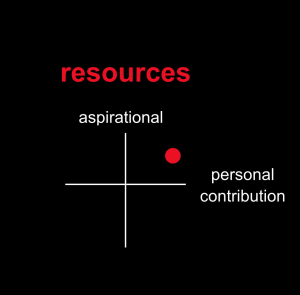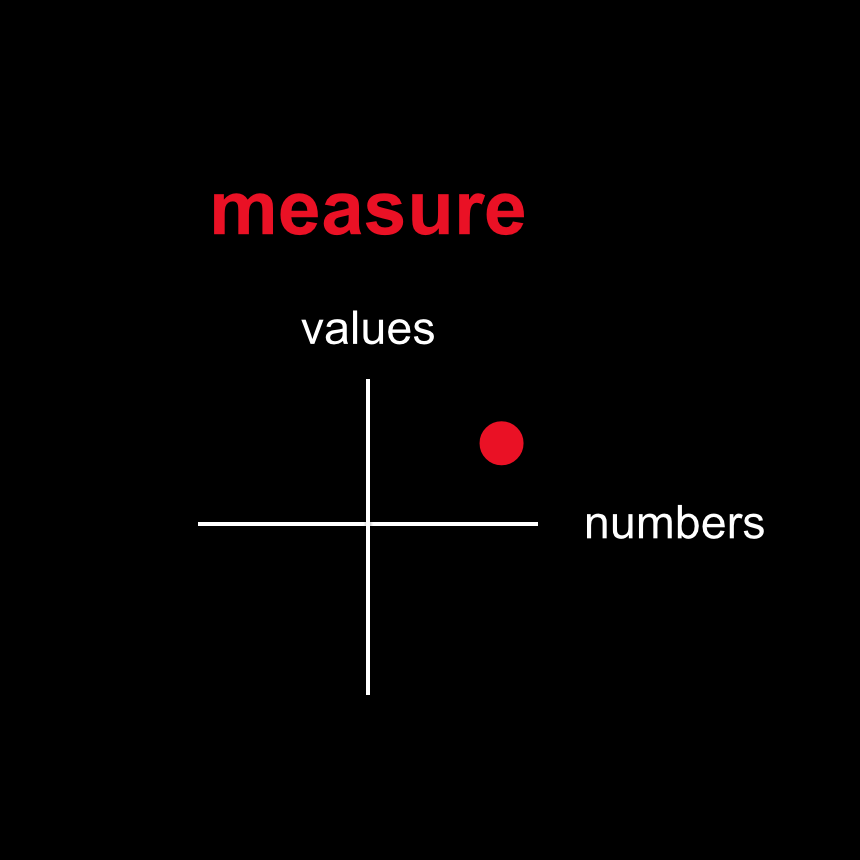This article first appeared in Fast Company
________________________________________________________________________

Photo: Flickr User Alex Medvick
"Capital is Being Superseded by Creativity and the Ability to Innovate."
- Klaus Schwab, Founder of the World Economic Forum
In today’s ‘Creative Economy’, businesses have two choices. Disrupt. Or be disrupted. There is no middle ground.
Which explains why at the center of every successful company sits a relentlessly creative heart.
But, it’s not enough to simply amass creative thinking as a core competency. Your company must be able to turn that thinking into solutions. Solutions that generate economic value, at scale and over time.
Exceptional companies do this every day. They unlock what I describe as, ‘Profitable Creativity’ - the ability to apply creative thinking to drive better results.
For these companies, the result is a limitless supply of innovative products and services that satisfy and often lead customer needs.
F.O.R.M. - An Operating System that Maximizes Profitable Creativity
In my work as an advisor and coach to some of the world’s most innovative businesses I’ve recognized that, whether by design or instinct, companies that produce ‘Profitable Creativity‘ are built on an identical set of organizing principles. Together, they effectively act as an organizational operating system.
I call this operating system F.O.R.M.
Fully implemented, it makes ‘Profitable Creativity’ as reliable as electricity.
I’ve studied these principles at work at over at 50 companies, and developed F.O.R.M. as a comprehensive diagnostic. It’s presented here as an actionable process you can quickly perform yourself.
Defining F.O.R.M.
The four principles of F.O.R.M. are connected to each other in a specific sequence. Once operational, the system continuously encourages the organization to challenge its own beliefs and behaviors to ensure its enduring relevance.
Focus: Where are we going? Why do we exist? What is our vision? Who will care?
Organization: How should we organize? Does our structure support our vision? Do we engender collaboration? Are we moving at the right speed?
Resources: Who are the right people? Are we attracting and retaining them? Do we partner with the right companies? Are we developing modern leaders?
Measurements: What are we doing and why are we doing it? Are we meeting our goals? Are we becoming more or less relevant?
Calculating F.O.R.M. Scores
Creativity is both an art and a science - a blend of instinct and mechanics.
The four principles of F.O.R.M., therefore, are each built on two metrics - one emotional, one practical. These eight sets of metrics determine an organization’s F.O.R.M. Score.
Here, we have simplified each metric into a single question. Answer all eight honestly, and you’ll immediately start to identify where you need to prioritize your organization’s energy.
We’ve applied these measurements to over 50 companies. The results are consistent.
Companies with the highest F.O.R.M. scores:
- Rank higher on lists of innovative companies and leaders
- Appear higher on the list of places the most talented people want to work
- Receive a higher number of awards within their respective industries
- Show up more frequently on “Best Places to Work” lists
- And, in those cases where we can compare financial data, generate more revenue at higher margins on a per person basis.
F.O.R.M. Score Categories
Based on their F.O.R.M. scores, companies fall into five distinct groupings.
From high to low they are:
- ‘Game Changers’ - Changing industries and expectations
- ‘Movers’ - Heading towards the future with confidence and conviction
- ‘Maybes’ - Some progressive foundations - some old habits
- ‘Stuck’ - A little progress - but many behaviors rooted in the past
- ‘Dying’ - In immediate need of life support
The Foundations of F.O.R.M.
Focus
Every exceptional company is driven by a vivid picture of a successful future. This is usually translated into a statement of Purpose or a Mission. We like to ask our clients, ‘What is Your Why?’
The surest way to tell whether your business has a meaningful Why is to develop a ‘company obituary.’ If your business disappeared tomorrow, who would care? What would they say?
If you can articulate, clearly and simply, why your company exists and why it matters to customers, its death will cause wailing and rending of garments. Otherwise, your obituary will be a footnote on an industry trade blog.
Question 1.Focus - Emotional Metric: ‘Is Your Company’s Mission Inspirational’
Elon Musk, the founder of Tesla and Spacex, said, “I don't create companies for the sake of creating companies, but to get things done.” His willingness to challenge his organizations with big and important problems attracts talent and tenacity in equal measure. Both are fundamental requirements for sustainable Profitable Creativity.
Key InspirationTest: Get your senior team together and write your own company obituary. Then decide who, other than your staff, would mourn its loss a week from now? If the honest answer is almost no one, you need to redefine your company’s Purpose.
Question 2.Focus - Practical Metric: ‘Does The Company Create Change?’
Inspiration is a limited resource. After the initial noise dies down, if your company isn’t producing positive change in people’s lives, they will vacate their seats and find someone else to follow. If you do, they’ll stay to see what’s next.
Change sets the innovation bar higher and raises standards for everyone. It also forces you to constantly recheck your own Why. Far better that you decide how you will disrupt your own future before someone else disrupts yours.
Google’s Mission is, “to organize all the world’s data and make it useful.” Google Maps is just one example of that Mission producing changes in both behavior and expectations for customers and staff alike.
Key Change Test: Other than your employees, list all of the ways your company has improved people’s lives in the last year. These need not be world changing. But they need to be genuine.
Organization
Profitable Creativity depends not on moments of individual brilliance, but on your ability to create an environment in which brilliant people can willingly and enthusiastically collaborate.
Ed Catmull, founder and CEO of Pixar said, “Getting the team right is the necessary precursor to getting the ideas right. It is easy to say you want talented people, and you do, but the way those people interact with one another is the real key.”

Question 3. Organization - Emotional Metric: ‘Does The Company Engender Trust?’
Trust, according to Dana Anderson, the CMO of Mondelez, is the foundation on which collaboration is built.
Trust is dramatically deepened when leaders commit to an ‘idea democracy‘ - an environment in which every idea is owned by everyone. This encourages thoughts to be shared quickly, debated openly and accepted or discarded regardless of their creator’s rank or title.
72andSunny, one of Fast Company’s most Innovative Companies in 2015, is rigorous in its commitment to an idea democracy. In any brainstorm, once an idea is offered, it will be enthusiastically and openly discussed and debated. But at no point thereafter will you hear any reference to its originator. Rather than making its staff protective of their thinking, the practice promotes trust in the process and each other. The result is an increase in the volume of ideas and freedom in the debate that follows.
Key Trust Test: Who would oppose an idea democracy in your organization?
Question 4.Organization - Practical Metric: ‘Does The Organization Produce Collaboration?’
Creativity that is as reliable as electricity is built not on the inspiration of one or two exceptionally talented individuals, but on the minds of many. Today, disruptive businesses combine the skills of multiple disciplines in real time. Technology, entertainment, media and communications, fashion - all require organizations that combine diverse talents to produce valuable innovations.
Zappos is one of the first companies in the world to redesign its organization around a new management practice called ‘Holocracy’ - a philosophy that takes advantage of the ability of human beings to recognize inefficiency and system errors, by placing them within an organizational structure that allows them to take responsibility for fixing them. In a traditional bureaucracy, layers of management create a virtually impassable maze for suggestions to make it from the bottom to the top. A ‘Holocracy’ takes “just-in-time” management and extends it both vertically and horizontally across the entire organization.
Key Collaboration Tests: Do your management practices give power to groups or individuals? Do your management systems openly share real-time information from all areas of the organization, so that individual pieces of data become institutional knowledge?
Resources
Given the volatility of today’s disruptive industries, companies that produce Profitable Creativity need to attract and integrate a wider range of skilled practitioners then ever before, and do so in a highly competitive environment. Success depends on two criteria.
Question 5.Resources - Emotional Metric: ‘Does The Company Offer Aspirational Opportunities?’
Whether appealing to talent inside or outside your company, you must satisfy the needs of two rapidly growing talent pools. Gen Y and Gen Z. These are groups who want to make one thing more than any other - a difference. If the next position you can offer them on their career path isn’t important - or worse, isn’t interesting - your schedule will rapidly fill with exit interviews.
Warby Parker, the revolutionary eyewear company, routinely hires Ivy League graduates to staff their call center who turn down more lucrative entry-level jobs to answer phones. Because the business emphasizes sophisticated customer service that demands staff that can think on their feet, candidates are drawn to the immediate impact of the role. The organization is also quick to promote out of these positions, creating both a pathway and a narrative with which to attract others.
Key Aspiration Test: Which jobs inside your organization would you personally not do? What can you change to turn that into an empty list?

Question 6. Resources - Practical Metric: ‘Does The Organization Allow Talent to Maximize Their Personal Contribution?’
There is little point designing a dynamic, multi-disciplinary structure filled with exceptionally talented people if your management team then insist on micro-managing their behavior. If you’re clear about your business’s focus and the problems you’re trying to solve for your customers, you shine a spotlight on the paths to success. This lets managers point rather than lead, which unleashes both original thought and speed of action.
“Responsible people thrive on freedom and are worthy of freedom. Our model is to increase employee freedom as we grow rather than limit it.” Reed Hastings, founder of Netflix.
Key Personal Contribution Tests: What decisions would you fire someone for making without leadership approval? How can you cut that list in half?
Measurements
To unlock Profitable Creativity you have to have real-time access to the financial numbers, and someone who can tell you the story behind them. But, when companies ignore the human criteria that affect performance, they place profit over people. In a talent driven business, the only disruption that causes is to your longevity.

Question 7.
Measurements - Emotional Metric: ‘Does The Company Have Meaningful Values?’
A lot of companies talk about values, but few embed them into the organization’s day to day behavior. This half-hearted approach creates inconsistent decision-making, particularly under times of duress. Talented people want to know the rules of the journey, and they want to see everyone playing by them. Embedded values provide the discipline. Take that fabric away and you reduce trust, confidence and engagement - all pre-requisites for Profitable Creativity.
Aravind Melligeri, CEO of Aequs, a highly innovative aerospace manufacturing business, recently made part of his senior management team’s compensation dependent on strengthening their employees’ commitment to the company’s values. Aequs now benchmarks internal values every 6 months and runs internal workshops to bring each value to life.
Key Values Test: Ask six people to send you a list of the company’s values. Are they the same?
Question 8. Measurements - Practical Metric: ‘Does The Organization Know Which Numbers Are Important To Its Success?’
Companies need to measure progress across multiple criteria, because the obvious ones - revenue and margin - are a consequence of other stories. For instance, for any company dependent on creative thinking, high employee engagement is crucial. Once you’ve determined your key metrics, build a management dashboard that provides these numbers in real-time. In a world moving at social speed, if you’re still moving at enterprise speed you’re going to be the disrupted, not the disruptor.
Andrew Benett, Global CEO of Havas Creative Group, has implemented an employee engagement metric and tied it to senior executives’ bonuses. Each executive must create a five-point increase in employee engagement within their team over 12 months to receive a bonus. If, as in Havas’ case, 75 percent of your costs are in talent, putting a number to their level of engagement in your business is a direct path to Profitable Creativity.
Key Numbers Test: Which three metrics are most critical to improving your revenue and profitability? How many people in your organization agree with you?
In any successful company, you will find some of the organizing principles of F.O.R.M.. But only exceptional businesses exhibit them all.
Institutionalizing all four unleashes Profitable Creativity and turns any business from disrupted into disruptor.
None require capital. Only imagination and determination.
Essential characteristics for any modern leader.




























